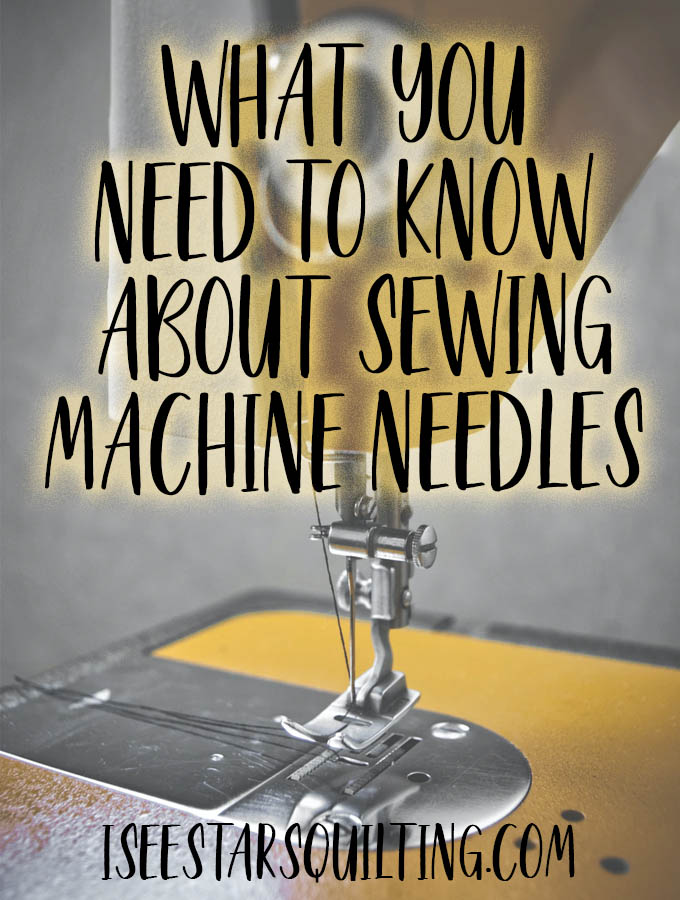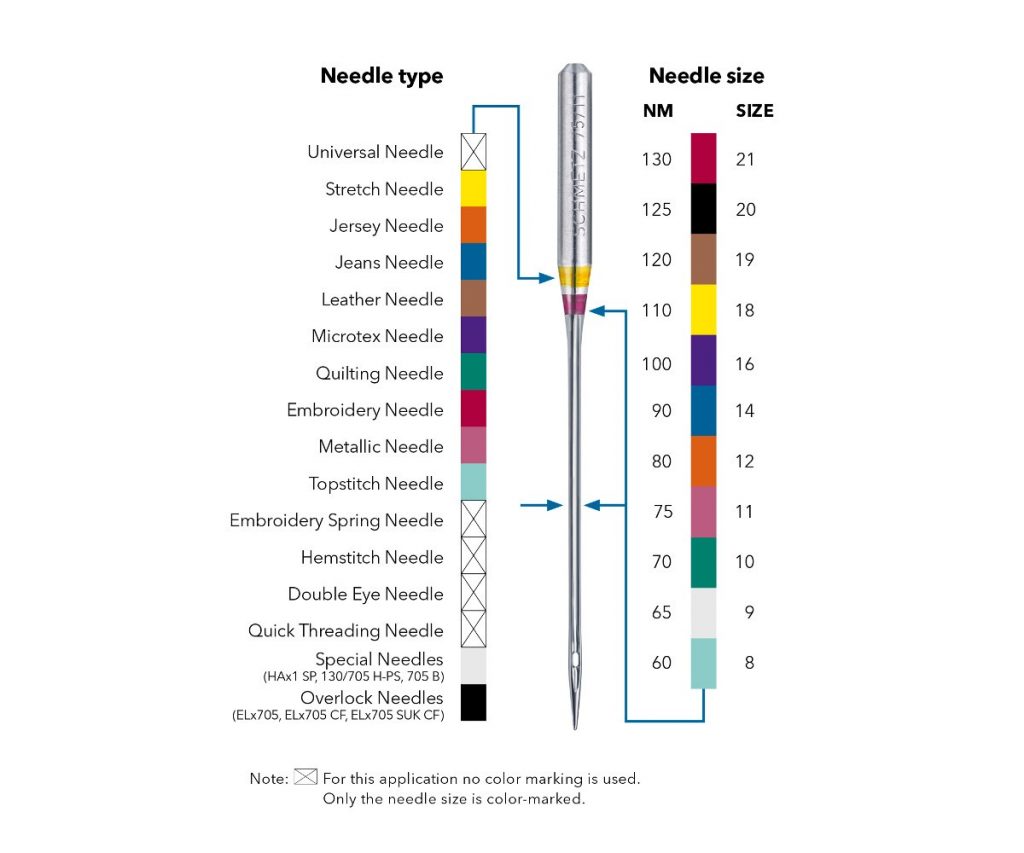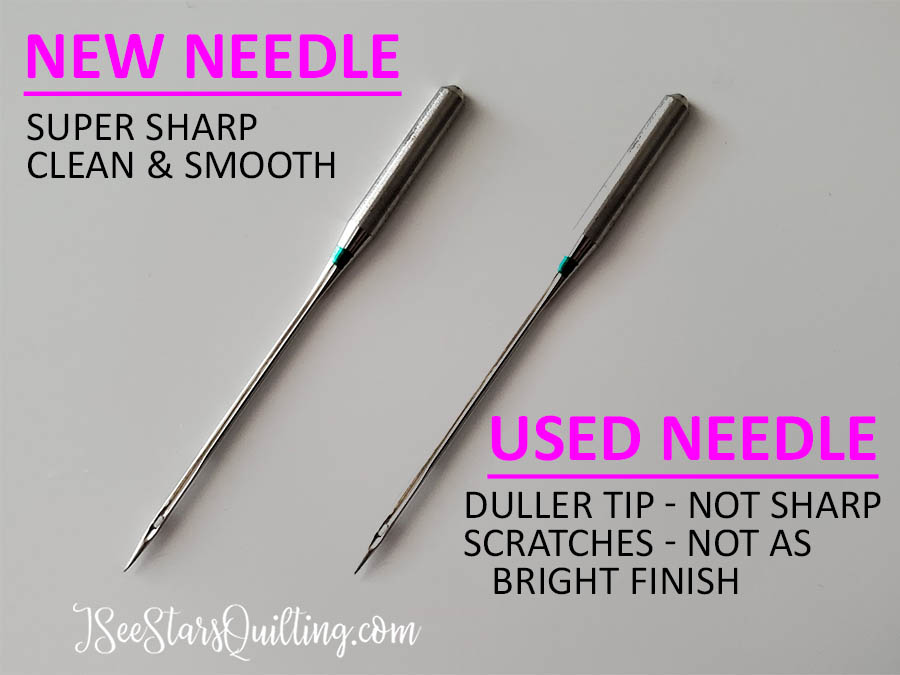If you are a sewer or quilter, then chances are that you have spent at least some time looking for the best sewing needles to use. There are so many types of sewing machine needles on the market today, and it can be overwhelming to find the right one.
I want to share with you the different types of sewing needles used for different fabrics, how they should work with your projects, and when you should change out your needle.
The most popular type of sewing needle is one that is made of steel. It has a perfectly sharp point that pierces through the fabric and can easily be threaded through the eyelet on your sewing machine needle plate
I really like the Schmetz brand sewing needles, but I have recently tried the generic brand and I haven’t had any complaints yet.
Most sewing needles are relatively inexpensive and cheap enough to purchase in bulk. (We’ll discuss why you need to have extras on hand in just a minute)
There are many different types of needles available on the market today: there’s really no one size fits all when it comes to choosing what type you need for various projects (i.e., embroidery, quilting).

Different Options For Needles
The Universal Needle
A universal needle is generally my go-to when I’m shopping because I know that it can handle MOST of the projects that I work on. The machine that I sew with is a relatively recent model on the market and does not require specialty sizes or parts.
The Universal needle was designed to be able to handle various fabrics.
It has a sharp point, which means that it will poke clean holes in your fabric while sewing.
A universal needle is also inexpensive and easy-to-find at most craft stores!
Larger/stronger Jean Needle
If you are sewing with material types other than cotton, you may need a stronger needle made from titanium. These are great for using with heavyweight denim or upholstery work because they stay sharper longer than cheaper alternatives while being less brittle under high stress.
Delicate fabrics
For thinner or more delicate fabrics, you may want to use a ball-point needle. These are great for fabrics like silk or satin because they don’t create as much friction and pass through the fabric more smoothly.
Embroidery Needles
Embroidery needles differ from your regular sewing needles because they are designed to pass through fabric with a lot of ease. They have smaller eyes so that you can embroidery without your thread catching on the needle. It also makes it easier to push your threads back and forth between stitches.
These needles also take into account the type of thread that will be passing through. Embroidery thread tends to have a sheen and often has a coating to it different from standard threads.
Notes about needle sizing
It is important to know that needles are sized according to their diameter, and sewing machine needle sizes can range from size 60-100.
You’ll definitely want to consult your sewing machine manual or search the internet for recommendations for your specific machine.
What do the colors on the tops of the needles mean?
So glad you asked! It is actually a really helpful code that is built into your needle that will tell you exactly what it is meant for!
The colors at the top of the sewing machine needles are crucial.
- Red: Nylon and other synthetics, polyester
- Yellow: Cotton and linen fabrics
- Blue: Denim, woolens, draperies
- Green: Silk, rayon, acetate-coated fabric such as satin
- Purple (or more rarely orange): Leathers and vinyl.

Why do I need to replace the needle on my machine?
Read the packaging on your needle. It should have instructions that tell how long each kind of sewing machine needle lasts so remember to check these when purchasing new ones.
Wear and tear on your machine
Something to consider: Continuing to sew with a slightly dull or well-used needle may appear to be working just fine, but the wear and tear on your sewing machine isn’t worth the risk, in my opinion.
Your sewing machine is a complex system of gears and mechanics that force the needle up and down through your fabric. Any pushback or resistance from a worn needle is going to cause further wear and tear on those internal parts. How much wear and tear depends on the age of the machine, the frequency in which you sew etc.
Here is a real-world example to consider: You can definitely use a dull butter knife to cut your dinner steak. It will eventually cut the meat into the bite sizes pieces you desire, right?
Wouldn’t it be a much better and more efficient method, not to mention less stress on your hands, wrists, and elbow if you use a sharpened steak knife? Absolutely!
Think of your hand, wrist, and elbow like the gears in your sewing machine.
Love your sewing machine and take care of it. Make it easier for it to make you happy for a really long time!
So, how often should you replace your sewing machine needle?
No one likes the idea of having to buy more supplies than they need to.
The general rule that I follow is about every 10-12 hours of sewing.
Let’s make it even easier to know when to switch…
When you are sewing in little spurts here and there and broken up bits of time throughout the week… the hours that you actually sew can be super hard to keep up with! …I KNOW!
So let’s make it even easier by saying that it is a good idea to replace your needle at the start of every quilt project you work on.
Use your good judgment here. If you know you’ve spent a very long time piecing a large quilt and you’re getting ready to quilt it, your machine may need a new needle for the quilting stage. More layers = more work for your machine and needle.
The needle packaging might suggest a longer sewing life. It is worth noting that different sewing situations can wear your needle down faster, such as quilting.
Quilting is sewing through multiple layers of fabric and batting at the same time. That is going to leave a different amount of wear and tear on the needle than sewing through just 1-2 layers of thin cotton.
Check-in and do a quick comparison when you change your needle
I always like to compare the needle that I pull out with the brand new needle to see the wear and tear on the needle and help keep myself accountable.

When you put your old and new needles side by side you can really see the differences! As yourself:
- Did I wait too long? Is the needle really dull this time?
- Does the needle hole look evenly worn? (can be a sign that the machine needs a tune-up or a trip to the shop)
- Should to try to keep in mind to change it sooner next time?
Hopefully, that helped you know when and why you should switch your needle on your sewing machine!
If you have any questions, please feel free to leave a comment down below or contact me. I would love to hear from you!
Happy Sewing!

